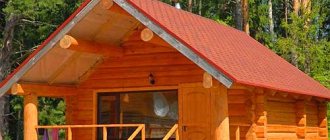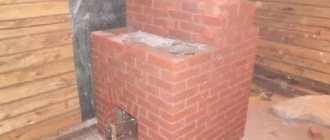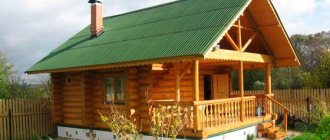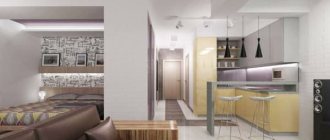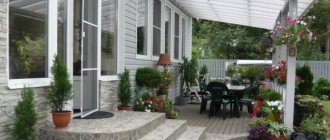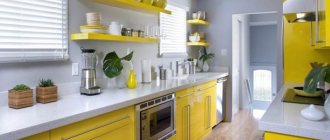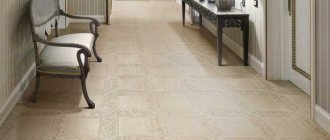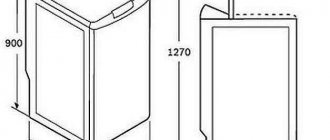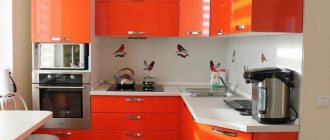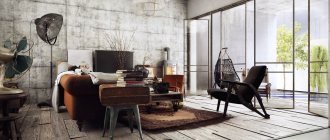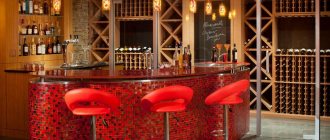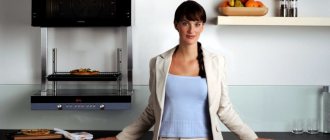Drawing paper Lily Holding “Rybachka”, for watercolor, folder, A3, 20 sheets
284 ₽ More details
Optimum belt bag
990 ₽ More details
Lathes
In the warm season, many people go to their dacha for barbecue, and in order for the food to turn out tasty, it needs to be cooked on the grill. Many people buy such devices, but you can make them yourself. The main thing is to choose the right material and dimensions of the structure. From the article you will learn how to determine the size of the grill.
There are several factors to consider
Focus on mandatory factors
Design parameters for barbecue depend on several factors:
- Method of roasting meat. The distance between the walls depends on this. Products can be cooked on skewers or used for this purpose on barbecue grills. Skewers are made according to standard parameters, so the grill will have to be made accordingly. But with a grill it is much easier, because there are many different sizes that are selected depending on the grill. Thus, first a grill is built, and then a grate is selected based on its parameters.
- The need for transportation. This is the answer to the question of what the material from which the structure is made should be. It all depends on where exactly you plan to enjoy the kebabs. If the grill is installed in your summer cottage, you can make it from cast iron or thick metal. Such a structure will be permanently located on the site, and will only be removed indoors for the winter, when it is no longer needed. If you don’t have a summer cottage, but from time to time you go out into nature and cook barbecue, it’s better to make the grill portable. It is advisable to make it from lightweight material, making sure that it is foldable and compact.
- Material for cooking meat. The optimal depth of the structure depends on this. There are two options: coals and firewood. In the first case, the grill is made shallow, because the coals fit compactly under your meat. But in the second case, the depth will be significant, since a lot of firewood will be needed to get the required amount of coals for cooking barbecue.
Making stationary models
There are several ways. They are not very different, but still there is a difference.
Method one: with a minimum of welds
It can be used if you have a large enough piece of metal on which the entire “reamer” will fit. In this case, mark out all the dimensions found above and cut out the “extra” corners. Then carefully trim the bend points with a grinder: it will be easier to bend.
We start everything by drawing dimensions on a sheet of metal, then cutting out the extra corners (to increase the size of the picture, click on it with the left mouse button)
Next, we begin to work with the welding machine. Inverter welding machines are best suited for welding 2-3 mm metal. Probably, a barbecue is the best product for a novice welder. There is no need to seal the seams here. Holes are even welcome - combustion air will flow through them. Having applied four seams, we get a finished barbecue box.
Bend the workpiece, then weld the seams (to increase the size of the picture, click on it with the left mouse button)
If the metal used is thin - 1.5-2 mm, the bottom and walls may bend. To prevent this from happening, they can be reinforced with a corner or profile pipe.
The bottom and walls can be strengthened so that they do not bend due to high temperatures
Next, all that remains is to weld the legs. They can be from corners or pipes. The options are different, but both can be used. See the photo for how to weld pipe legs to a metal grill. By the way, you can use the same principle to make legs for a collapsible barbecue - choose the diameters so that they fit tightly. Or weld nuts to the bottom and cut threads on smooth fittings of the appropriate diameter.
How to attach pipe legs to the bottom of a metal barbecue (to enlarge the size of the picture, click on it with the left mouse button)
Another way to make legs from corners or profile pipes. Here everything is even simpler: weld in the corners.
As legs for the barbecue, you can use an iron corner or a small-section profile pipe
Method two: a lot of welding
This case is suitable for you if you have metal, but it is available in small pieces. Then you simply cut the necessary blanks and then weld them. In this case, of course, the welds need to be applied more efficiently: their length is much greater.
The second way to make a metal grill with your own hands is to cut all the necessary parts for the box and then weld it (to increase the size of the picture, click on it with the left mouse button)
After the box is assembled, all that remains is to weld the legs. There are no differences here. Several options are described above.
Read how to make a metal gazebo for barbecue gatherings here.
Method three: on a frame made of corners
The sequence of actions differs from the second option. Perhaps this is a more correct way: there is a frame that will prevent the metal from bending. In general, such a homemade grill turns out to be more durable. Afterwards the sequence of work is as follows:
- weld a frame from corners (pictured on the left) or a profile pipe (pictured on the right)
- You weld the bottom to it, and then the walls.
These metal barbecues are made on a frame.
Well, if you are making a barbecue for yourself, with your own hands, it may make sense to provide a table top and/or a frame for laying skewers for comfort, as in the photo below. The top edge of the roasting pan is reinforced with a profile pipe. The reinforcement is welded so that “add-ons” can be inserted. So both the table and the stand for the skewers can be inserted or not as desired.
Homemade metal grill with options: a table and a stand for skewers (to increase the size of the picture, click on it with the left mouse button)
And for those who like to do everything thoroughly, there is the idea of an iron barbecue under a canopy. Wonderfully done. This metal barbecue with a roof was made by a novice welder with his own hands. He used this project for training: he learned to cook using inverter welding. A very good idea, and the execution is not bad.
Homemade barbecue under a canopy with a “kitchen” corner (to increase the size of the picture, click on it with the left mouse button)
If you are interested in barbecues that are quickly made and do not require special skills, pay attention to barbecues made from gas cylinders.
Standard parameters
Now let’s outline the generally accepted parameters of a proper barbecue. Of course, you calculate the ideal parameters for your design yourself, taking into account the above nuances. However, if you don’t want to fool yourself with extraordinary options, we suggest building a standard grill for preparing delicious kebabs. Below we will consider each parameter separately in detail.
Width
The width of the structure directly depends on the size of the skewers or grates on which you are going to cook the meat. On average, the total length of the skewer is 45–50 cm, of which 30–35 cm are “working” (that is, the part on which the meat is threaded). That is why a standard grill should be no wider than 40 cm, otherwise the heat that comes from the coals will be wasted, and the material consumption and cooking time will increase. But the standard dimensions of a grill for frying meat are 18x28 cm, so you need to calculate the width based on the above figure.
Depth
This parameter is selected based on two factors: the type of meat and the temperature conditions. Most often they cook pork or lamb, which for good roasting should be at a distance of 5–10 cm from the coals.
The optimal depth is about 20 cm. For good roasting, the coals must be laid out in a layer of 5–10 cm, and the distance to the meat should be approximately 8–10 cm. If you are using firewood rather than coals, then the container must be made a little deeper to fit more firewood. But in this case, keep in mind that the layer of coals should be larger than the previous one, because the distance to the meat also increases.
Height
The height of the barbecue is calculated depending on the height of the person who will cook the barbecue. As a rule, the size is calculated based on the distance from the feet of the person who will stand behind the grill to the waist. This height allows a person not to strain the spine by constantly bending over the structure.
The generally accepted standard is a height of 75 cm to 125 cm. The nuances depend on your height (or who will cook the meat).
The height must be at least 75 cm.
Length
To turn the skewer over without touching the others, the distance between them should be 5 cm. Accordingly, think about how much food you will need to cook. If you are going with large groups, you will need a long structure that can hold up to 10 skewers. 100 cm should be enough. But if your company is small, and 6 skewers (standard set) are enough for you, then you should not make the device longer than 60 cm.
Indicators for brick structures
Brick structures are installed in summer cottages and take up a lot of space. They are stronger and more durable than metal ones. If you are used to often going to barbecues, a brick grill is what you need. Their basic parameters are the same as those of conventional barbecues, however, additional elements can be attached to them. Such elements could be a chimney or a dishwasher. Such designs increase the comfort of the process.
What features should be taken into account when building a brick zone:
- Their length, width and height are standard. This is done to make cooking meat dishes much more convenient.
- The depth depends entirely on the format of the chosen brick. If the brick has a format of 6 cm and the joint thickness is 1 cm, then the depth will be 21 cm (three rows) or 28 cm (four rows).
Also keep in mind that such a design will change the landscape and you will have to think about how to decorate it beautifully. Choose a suitable place for it and arrange it in such a way that the grill can be somehow covered or insulated for the winter. If you feel that building such a fireplace is too difficult for you, be sure to involve professionals.
Tips for metal analogues
Metal barbecues are lighter and more practical than their brick counterparts. There are many nuances here that depend on the selected material from which the grill will be made. Let's look at some of them:
- You can make a barbecue device using a 200-liter barrel. However, here the width will always be larger by default, since the dimensions of the barrel do not coincide with the standard dimensions.
- You can use a stainless steel washing machine tub to create a vertical pipe fireplace. It is not possible to adapt skewers to this design, but a metal grill grate will work perfectly.
- The legs can be made from a variety of used materials. This is not always convenient from a practicality point of view, but it will make your grill unusual.
- Whether to drill holes or not is up to everyone to decide for themselves. Many agree that they do more harm than good.
- It is recommended to coat the metal fixture with fire-resistant paint. This will give it a presentable look and increase its service life.
See also: what paint is suitable for a barbecue.
So, we looked at the standard sizes of barbecues. Now you can build this structure yourself and please your loved ones with a delicious barbecue.
Features of barbecues
- Collapsible. They have compact dimensions, light weight and convenient design. You can take it with you on the road.
Made from thin steel material. They are most often used by tourists on hikes and trips. The disadvantages of this design are that with regular heating it changes its shape, making it short-lived.
barbecues. They are made from thin steel sheets and also from durable metals. Its features are that the legs have small wheels, so you can easily move them around the yard, or, if not needed, put them away in the storage room.
Mobile- Stationary. Such braziers are very large and can be installed in one place forever. Can be made of brick, stone or metals. To protect from weather precipitation, a canopy is installed at the top.
- Gas and electric. Used at home. But many people underestimate this option.
